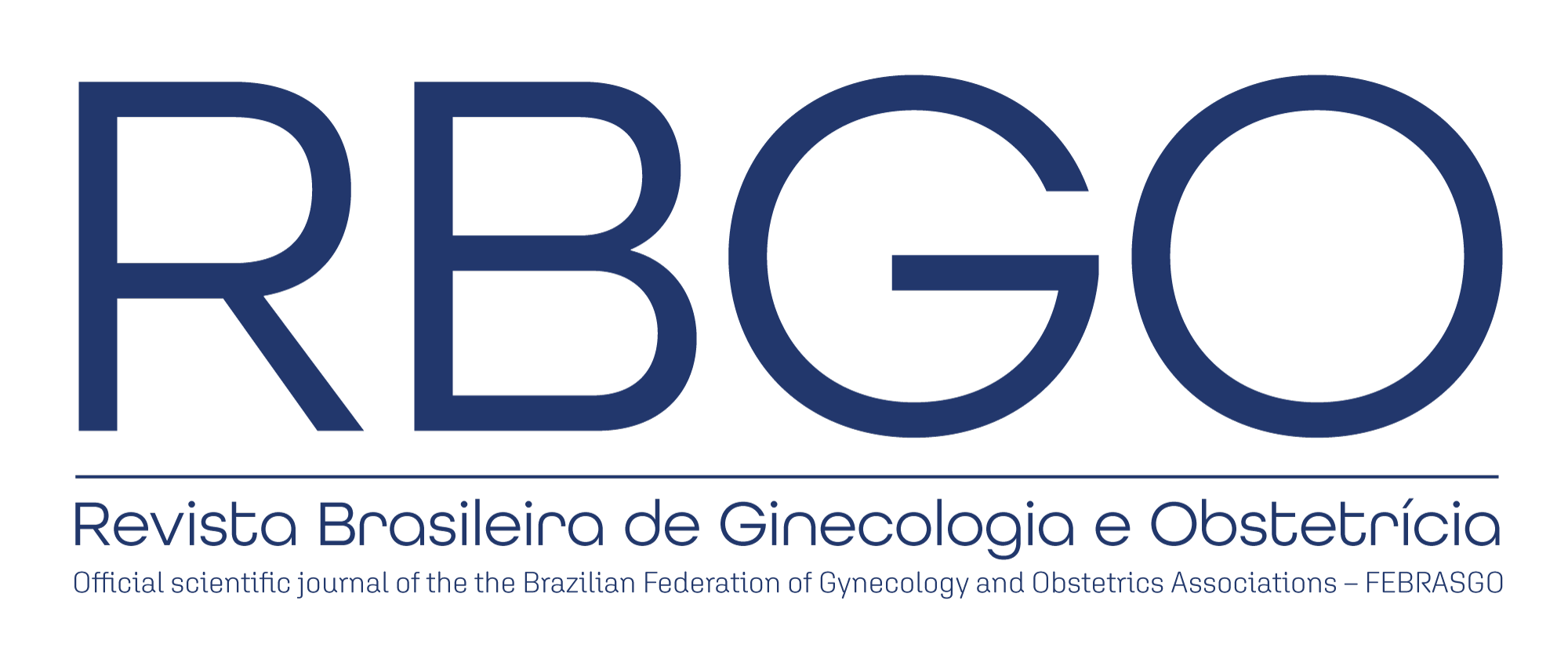Resumo em Português:
OBJETIVO: comparar a reprodutibilidade intra- e interobservador da medida da espessura total do segmento uterino inferior (SUI), por via abdominal, e da medida da camada muscular, por via vaginal, usando ultra-sonografia bi- e tridimensional. MÉTODOS: foi estudada a medida da espessura do SUI de 30 gestantes com cesárea anterior, entre a 36ª e a 39ª semanas, por dois observadores. Foi efetuada abordagem ultra-sonográfica abdominal com a paciente em posição supina e vaginal em posição de litotomia. No corte sagital, foi identificado SUI e foram coletadas quatro imagens bidimensionais e dois blocos tridimensionais da espessura total por via abdominal e o mesmo da camada muscular por via vaginal. As aquisições tridimensionais foram manipuladas no modo multiplanar. O tempo foi cronometrado. A reprodutibilidade foi avaliada pelo cálculo da diferença absoluta entre todas as medidas, proporção de diferenças menores que 1 mm, coeficiente de correlação intraclasse (ICC) e limites de concordância de Bland e Altman. RESULTADOS: a medida da espessura média do SUI por via abdominal bidimensional foi de 7,4 mm e, por via vaginal, de 2,7 mm; a tridimensional foi 6,9 mm abdominal e 5,1 mm vaginal. Reprodutibilidade intra- e interobservador da via vaginal versus abdominal: menor diferença absoluta (0,2-0,4 versus 0,8-1,5 mm), maior proporção de diferenças (85,8-97,8 versus 48,7-72,8%) com p<0,0001, versus ICC (0,8-0,9 versus 0,6-0,8) e menores limites de concordância (-0,9 a 1,5 versus -3,8 a 4 mm) para via vaginal. Ultra-sonografia tri- versus bidimensional: menor diferença absoluta (0,2-1,4 versus 0,4-1,5 mm), maior proporção de diferenças (57,7-97,8 versus 48,7-91,7%) com p>0,05 e menores limites de concordância (-3,8 a 3,4 versus -3,6 a 4 mm) para ultra-sonografia tridimensional e ICC semelhantes (0,6-0,9 versus 0,7-0,9). CONCLUSÕES: do exposto, concluímos que a medida da espessura da camada muscular do SUI por via vaginal utilizando a ultra-sonogafia tridimensional é mais reprodutível. Nossos resultados, porém, não indicam que essa medida tenha implicação clínica para predição de rotura uterina, que não foi objeto deste estudo. O único trabalho que correlacionou a espessura do SUI com risco de rotura uterina, sem interferir na conduta do obstetra ou antecipar o parto, foi feito por medidas bidimensionais abdominais da espessura total.
Resumo em Inglês:
PURPOSE: to compare the intra and interobserver reproducibility of the total thickness measurement of the inferior uterine segment (IUS), through the abdominal route, and of the muscle layer measurement, through the vaginal route, using bi and tridimensional ultrasonography. METHODS: the IUS thickness measurement of 30 women, between the 36th and 39th weeks of gestation with previous caesarean section, done by two observers, was studied. Abdominal ultrasonography with the patient in both supine and lithotomy position was performed. In the sagittal section, the IUS was identified and four bidimensional images and two tridimensional blocks of the total thickness were collected through the abdominal route, and the same for the muscle layer, through the vaginal route. Tridimensional acquisitions were manipulated in the multiplanar mode. The time was measured with a chronometer. Reproducibility was evaluated by the computation of the absolute difference between measurements, the ratio of differences smaller than 1 mm, the intraclass coefficient (ICC), and the Bland and Altman's concordance limits. RESULTS: the average bidimensional measurement of IUS thickness was 7.4 mm through the abdominal and 2.7 mm through the vaginal route, and the tridimensional measurement was 6.9 mm through the abdominal and 5.1 mm through the vaginal route. Intra- and interobserver reproducibility of vaginal versus abdominal route: smaller absolute difference (0.2-0.4 mm versus 0.8-1.5 mm), greater ratio of differences (85.8-97.8% versus 48.7-72,8%), with p<0,0001, higher ICC (0.8-0.9 versus 0.6-0.8) and lower concordance limits (-0.9 to 1.5 versus -3.8 to 4 mm) for the vaginal route. Tri versus bidimensional ultrasonography: lower absolute difference (0.2-1.4 versus 0.4-1.5 mm), higher ratio of differences (57.7-97.8% versus 48.7-91.7%) with p>0.05[A1] and similar lower concordance limits (-38 to 3.4 versus -3.6 to 4 mm) for tridimensional ultrasonography and ICC (0.6-0.9 versus 0.7-0.9). CONCLUSIONS: from the above, we came to the conclusion that the measurement of the IUS muscle layer, through the vaginal route using tridimensional ultrasonography is more reproducible. Nevertheless, our results do not indicate that this measurement shows any clinical evidence to predict uterine tear, as that was not the aim of this study. The only work that has correlated the UIS thickness with risk of uterine tear, without interfering in the obstetrician behavior or anticipating delivery, was done by bidimensional abdominal measurements of the total thickness.
